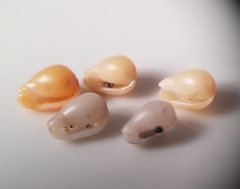Cockle
Cardiidae
The Mollusca Cardiidae, commonly referred to as the family of cockles, is a significant group of bivalve mollusks spread throughout various marine habitats, including those found in the Comunidad Valenciana. These fascinating creatures are known for their distinctively ribbed shells, which are often heart-shaped when the valves are joined together.
Characteristics of Mollusca Cardiidae:
- Shell Structure: The shells of Cardiidae are typically strong and heavy, with pronounced ribs and a symmetrical design. Their appearance is often either white or sandy, blending well with their coastal environments.
- Habitat: Typically found in sandy or muddy areas of intertidal zones, they often bury themselves slightly for protection and to access their preferred foods more easily.
- Feeding: As filter feeders, cockles use their siphons to extract plankton and other small organic particles from the water, playing an integral role in their ecosystem by helping to maintain water quality.
- Locomotion: Cockles are capable of limited movement by extending their foot and contracting it, thus enabling them to burrow or move short distances if necessary.
- Reproduction: They tend to reproduce by releasing eggs and sperm into the water, where fertilization occurs externally. The larvae are planktonic before settling down and developing into juvenile cockles.
In the Comunidad Valenciana, cockles are not just an ecological component but also part of local culinary traditions. They are sometimes referred to by their Spanish name, "berberechos," and are commonly enjoyed as a delicacy in various dishes.







